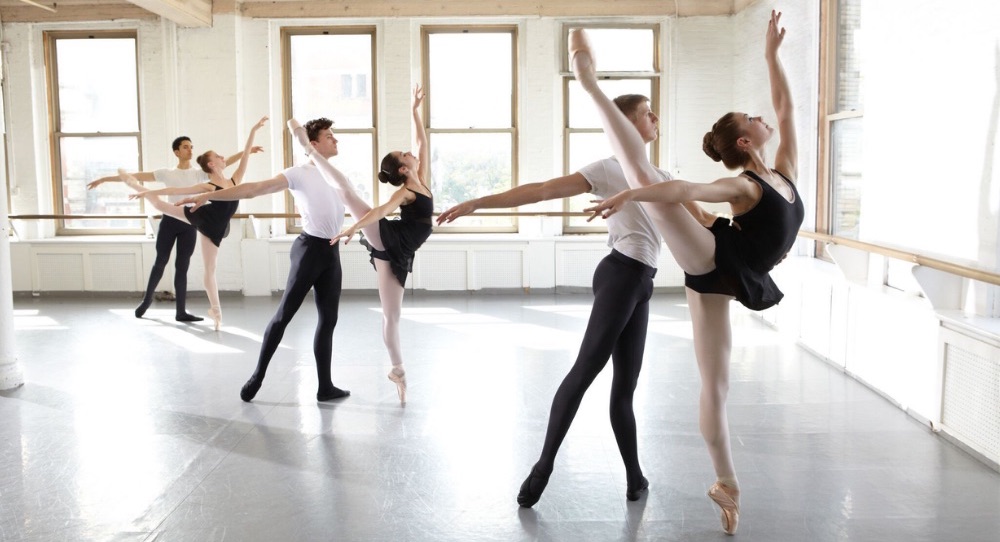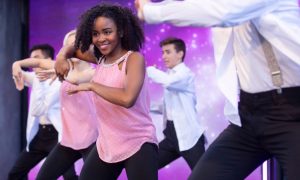When you are planning on installing a dance floor system in your studio, there are many things to think about. What you may accidentally overlook are all the essential elements of the floor itself. Fortunately, many of the pitfalls can be circumvented. By understanding the elements of a dance floor and how they all fit together, you can adequately plan and execute a flooring installation on your own.
Consider the base
Underneath a dance floor is the base. Is there a concrete slab, old hardwood floor, carpet or tile? Depending on what is there, the first layer could be different. Concrete bases will always need a vapor barrier. Any time there is a threat of moisture coming through the base, a vapor barrier becomes essential.
Next, your base needs to be level and true. If the floor is uneven, it will negatively impact any construction either immediately or in the future.
Other things to check for with your base include:
- Ensuring there is no mold or mildew
- Carpeting is glued down securely and cleaned
- Loose tiles are addressed and repaired
- Fix any areas that are not level
- Vacuum up any remaining debris
Putting up the subfloor
Next comes the subfloor, which is the heart of the dance floor system. There are several varieties of subflooring, such as floating subfloors and foam. Regardless of the type you choose, each subfloor should have the same properties: shock absorption from jumps, spring and lateral foot support.
Many dance studio owners wonder how springy a floor is, but you should be more concerned about lateral foot support. When your subfloor has decent lateral foot support, your dancers will be able to balance and move more safely.
Floating subfloor systems are excellent for absorbing shock, compressing, flexing and then safely diffusing the energy. The other options include multi-layer high density and lower density foam rollout floors. Foam subfloors are often seen in schools and community centers — places where the floors may need to be transported.
The downside of foam directly attached to vinyl is that it does not transmit sound. Floating subfloors have a dead space that makes them more ideal for tap dance. Conversely, foam-backed subfloors are ideal for jazz, contemporary and modern.
You will also need to consider how long you plan to stay at your studio’s location. Subfloors can be prefabricated or installed at your location, but they all come with a level of permanence. If you are unsure, contact Stagestep to discuss which kind of subfloor is right for your setup.
Choosing a top floor
After the subfloor comes the top floor, which is either wood or vinyl. The top floor surface is about aesthetics. You can choose the color of the floor to match the scheme of your studio. The other element of the top floor is the coefficient of friction, which makes a floor fast or slow.
You can choose a top floor with excellent slide for the tappers, or you can select a slower floor for more control in ballet. Most studios today want a floor that is multipurpose, since they offer multiple styles.
Calendared vs. extruded Marley
If you decide to go with Marley flooring, you have two options: calendared or extruded vinyl. A calendared vinyl floor will be softer and is usually reversible. Extruded floors are harder, denser floors that are mainly used for percussive dance forms, including tap, ballroom and character dance. Generally, ballet and contemporary dancers prefer calendared floors. Multi-purpose studios usually select the harder extruded Marley.
The level of hardness or thickness of a vinyl floor has nothing to do with their durability or quality. Most vinyl floors wear down because of inappropriate use or poor maintenance of shoes.
Stagestep’s Rave™, the Bravo Collection™ of floors and Super Timestep™ are calendared. Timestep™, Quietstep™ and Dancestep Plus™ are extruded. Get samples if uncertain, and be sure of your choice before buying.
Wooden top floors
Wood is your other top floor option. You don’t have to worry about your wood floors being permanent, as Stagestep has created Encore, which also comes with a built-in floating subfloor. You can use Encore for tap and ballroom dancing after applying FloorShield II. Encore can be transported, but you can also opt for a permanent installation.
Taping and permanence
How long do you plan on being at the studio? What will you use the floor for? These questions are other elements of the dance studio floor. If you have to take your floor with you every six months for a performance, then you do not want a permanent installation. For that, you use top tape for a temporary installation. Want to keep the floor for a few years? Use two-inch double face tape underneath and top tape over the seams and around the circumference of the floor. Staying for five years or longer? Four-inch double tape under the Marley is all you need.
ReUse It is another option. ReUse It is a long-term netting that applies suction to keep the floor in place. You can then keep your floor for an infinite amount of time.
Don’t forget to replace your tape! Top tape is only good for four to six months. Two-inch double tap lasts two to three years, and four-inch tape can last up to six years.
DIY or professional installation?
While most dance floor systems are designed to be DIY-friendly, there are some situations where you will need a professional team. Adhesive application can be difficult and arduous, so you have to decide if you are up for it. Permanent hardwood floors must also be installed by a professional. You must also consider a few other factors, including acoustics, environmental factors and whether you are sharing the space with others.
Luckily, there is plenty of information available online on how to determine which system is correct for you, as well as how to troubleshoot installation.
Conclusion
One of the largest expenditures you will have when opening or running a dance studio is the flooring; it is also an extremely important piece. You can dance without mirrors, without barres and without music, but you cannot dance well or safely without proper flooring. Be sure to choose and build your floor carefully.
Stagestep can help you select the right dance floor for your studio. Whatever your budget or style, Stagestep has options. Check out the company’s new Flooring Guide for more details on its products.
For more information and further details on flooring options, visit www.stagestep.com.















